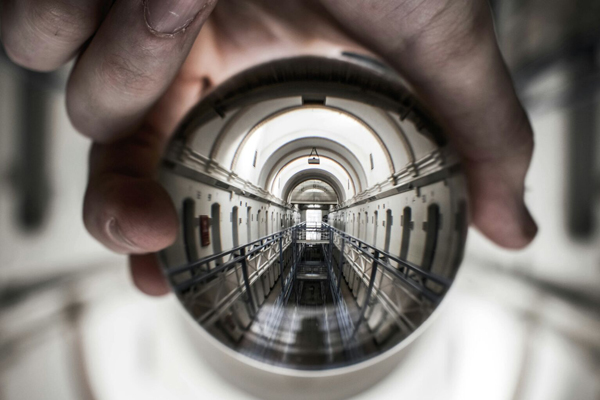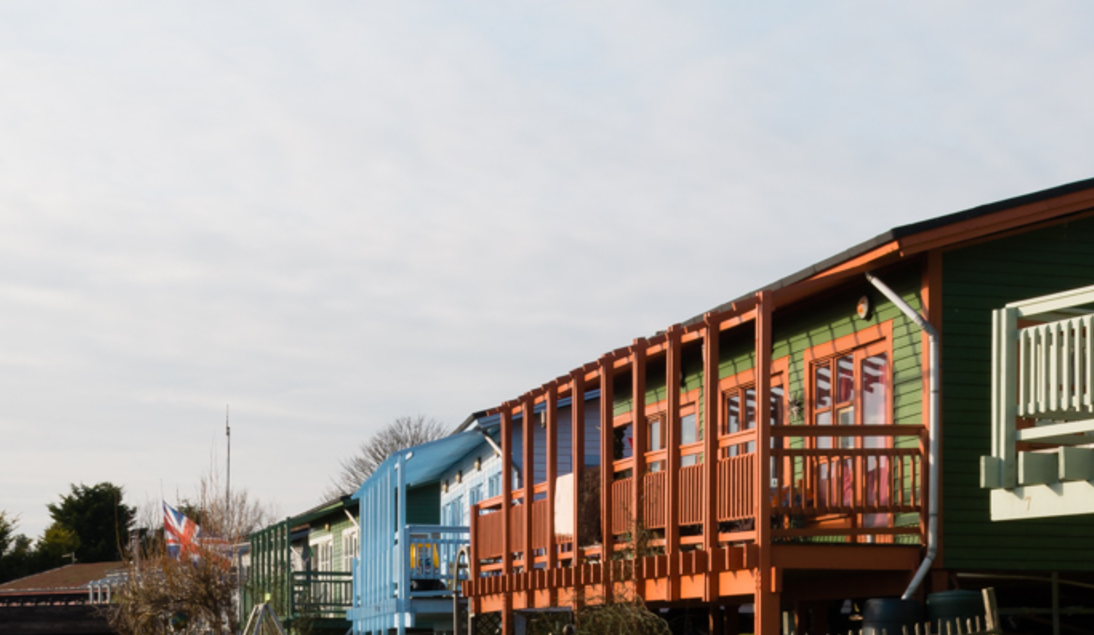Graham Henderson FRSA discusses the transformation of the new RAF Museum as part of a major capital project, and reflects on what the refurbishment tells us about latest thinking in the museums and heritage sectors as they respond to rapid social and technological change.
As a small boy I was obsessed by aircraft, and by the history of the Royal Air Force in particular. Like many boys growing up in the 1970s, I made models of the most celebrated combat aircraft, including the De Havilland and Sopwith Camel bi-planes of the First World War, the Spitfire and Hurricane fighters of the Second, and the then working jet aircraft of the RAF, the Lightning and the Jaguar. But that was not all. I also made models of the Lancaster bomber, the Mosquito with its famous wooden frame, and the Beaufort fighter bomber of coastal command in the Second World War, and I pestered my parents to take me to air shows. I was what would now be called an ‘aircraft geek’. I was recently fortunate to be given a private preview of the newly refurbished RAF Museum at Colindale as part of an official visit by alumni from the Oxford Cultural Leadership programme. This refurbishment is the result of one of the largest capital projects in the UK’s museum and heritage sector, involving a mixture of grants, statutory funds and corporate sponsorship totalling over £26 million and resulting in the complete transformation of the site, an old aerodrome in Colindale, North London. To my astonishment I found the names of the aircraft and even facts and figures about them came flooding back to me, along with the thrill of recognising their distinctive aerodynamic shapes and of seeing these iconic aircraft up close in their original colours and markings. Even the café is dominated by the enormous bulk of a Sunderland Flying Boat, its fuselage combining features of a boat and a plane. If ever a museum was made for me, it is this one. I am therefore probably as well-placed as anyone to comment on what the transformation of this important collection says about the way in which the museum sector is adapting to the changed environment of the 21st century, including the demands of the digital natives who now constitute a large and growing component of its target audiences. The new RAF Museum has put a great deal of thought into how to engage with its visitors and into how it should ‘future proof’ itself in a fast-moving and challenging period of technological and social change.
As Maggie Appleton CBE, the Chief Executive, explained at the start of our visit, the enormous physical transformation of the RAF Museum and its site has been accompanied by an equally important cultural transformation. The refurbishment has provided the museum with the opportunity to reaffirm its core purpose, namely to present and explore the history of the RAF. There was a danger that the museum was becoming a general aviation museum. Now the focus on the RAF has been restored. And it is a critical focus too. Although the museum enjoys friendly relations with the RAF, it is a separate organisation and seeks to take an objective view of the service and its operations. Nor are the issues raised always easy ones. For instance, one exhibit seeks to present and question the ethics of carpet-bombing German cities in the Second World War. And space has been left in hangar 6 for a Predator drone which is due to be delivered shortly as the latest addition to the permanent collection. Not for the first time during my visit I wondered at the rate of change we are experiencing and at the efforts of the curators to keep pace with it. The implications of drone warfare are still hard to assess and its crossing of traditional boundaries and the collateral damage it inflicts are deeply controversial. Where does the line between curation and commentary lie when it comes to a drone? And now the talk is of autonomous weapon systems and new and even deeper realms of moral complexity.
Another striking feature of the new RAF Museum is the wonderful use it makes of objects. It is certainly not just a question of encountering hangars full of aircraft. For instance, the exhibition begins with a beautiful array of over 80 pieces of RAF headgear demonstrating many different aspects of the RAF and its history. The exhibit is so beautiful that it would not look out of place in a design museum, and some of the flying helmets show the constant and fertile relationship between reality and popular culture. Looking at the stylish shapes of the flying helmets it is hard not to think of tie-fighter pilots in Star Wars or Battlestar Galactica. And that is just the start. It is almost as though the digital age has led to a new focus on tangible and real objects which tell a story about the RAF and those who have served in her. Evidence of the digital age is everywhere too, in touch screen information panels and interactive displays, complex and challenging, and dense with information. For me, a non-digital native, the effect is slightly overwhelming. But it is obvious that no museum now can afford to be without digital interactivity and a spirit of high-tech innovation if it is to engage successfully with younger visitors. This is doubly the case with a museum dedicated to the RAF, whose modern functionality involves state-of-the-art digital technology on the cutting edge of invention. Again, the topicality of what the RAF Museum is doing is astounding. In some cases the exhibits have been carefully checked to ensure that no information of value to the UK’s potential enemies has been inadvertently included. For a museum there must also be an anxiety in all this too: how can its exhibits, its interactive features, and its games possibly keep pace with the rate of digital change outside of the gates of the museum? Nowadays it feels as though museums like this need to run very fast just to keep still.
When I was a child a certain level of knowledge about the two world wars could be assumed. Most of us had parents or grandparents still around who could remember one or both wars well, and who regaled us with stories. For instance, my grandad was a plane-spotter at RAF Boulmer in Northumberland and I inherited from him his outlines of aircraft silhouettes, designed to help him identify the aircraft overhead as friends or foes. Now, however, even the Second World War is distant history, and a knowledge of its main narratives and key events cannot be assumed in the same way. The RAF Museum now must provide a clearer context for its objects and its iconic aircraft, explaining and bringing to life their provenance. At the same time, it is interesting to see even relatively recent events like the Gulf War, the invasion of Iraq and the bombing of Libya already framed as history and placed clearly in a timeline. The latter is full of surprises too. One of my colleagues expressed astonishment that the march against the Iraq war in 2003 preceded the launch of the iPhone. Sometimes even our own memory of the order of events is uncertain.
The whole nature of our museums is changing. It is amazing to learn that the military enthusiasts and aircraft geeks make up only 6% of visitors to the RAF Museum. Maggie Appleton, the CEO, and Karen Whitting, the director of content and programmes, are keenly aware that the RAF Museum needs to connect with much wider audiences and find ways of communicating its ongoing relevance to them. Not only does it have a national presence (it has a second site at Cosford in the Midlands), but it has a strong role to play in the local community of which it is a part. It is therefore great to see the newly refurbished RAF Museum so focused on opening up its green spaces and encouraging daily uses of these by members of this community. The museum of the future it seems, especially one that enjoys such a strong sense of place and such a spacious green site, has a responsibility to also act as a social and educational hub for the local area. It is striking to see how strong a part this social capital building is playing, and to hear that the local authority is also playing an important role in the transformation of the site. As Maggie states in bald terms, the role of the modern museum must be about much more than mere preservation. It needs to play an active part in communicating its own relevance. The RAF Museum sees itself as a social history museum and not a military museum, and that is surely right.
From a professional and organisational perspective, it is also clear that the successful transformation of the RAF Museum has required dynamic and inspiring leadership. The sheer scale of the Museum and some of its exhibits, and the speed at which the refurbishment has proceeded, is daunting. Huge aircraft, boats and other exhibits weighing many tons have needed to be moved, installed, lifted or placed. Buildings have been utterly transformed; the whole things looks, and feels, like a military operation in itself. And for capital changes on this scale to succeed, Maggie and her team have needed to work with energy, commitment and relentless positivity. For me, at least, it is this dramatic transformation, this values-based leadership, that has powered and underwritten the enormous physical changes to the Museum and its exhibits. It is an organisation that is revitalised, has a clearer vision, and is making it happen.
The RAF Museum is now almost ready to re-open its doors to the general public. Its official launch date is 30 June 2018, and even before then it will be hosting visits from selected groups and from the local community. Soon it hopes to be attracting over half a million visitors a year to its wonderful green site in Colindale. From my visit I came away with the view that the Museum is not just about preserving and commemorating the past of the RAF but also about challenging and questioning this past. Its exhibits are not just awe-inspiring and fascinating but represent in physical form an important strand of our cultural DNA. As we fly into an uncertain future it becomes ever more important that we know where we came from, and understand the men and women of the RAF who made us who we are.
Related articles
-
Managing A Goat Rodeo
Diana Davidson
Diana Davidson FRSA shares her experience of organising her first regional RSA event in a community of independent free spirits - much like goats!
-
A map of the modern Brighton & Hove
Cara Courage
In this blog post Cara Courage FRSA talks about the often overlooked modern architecture of the Brighton and Hove area. She considers the variation in buildings that Brighton is known for and announces the next guided walk of the area.
-
Blog: Something old, something new - a case study in building a community
Andy Gawin Warby
How do you convert an old, derelict space into something fit for the modern day, and build a sustainable business model around it? Read how one Fellow and group of committed local residents did just that in Camden.




Be the first to write a comment
Comments
Please login to post a comment or reply
Don't have an account? Click here to register.